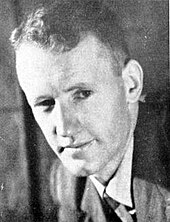How Robert Mugabe Joined Politics, Explained
Steve Oke Chapchap Market No Comments

Early political career: 1960–1963
While Mugabe was teaching abroad, an anti-colonialist African nationalist movement was established in Southern Rhodesia. It was first led by Joshua Nkomo‘s Southern Rhodesia African National Congress, founded in September 1957 and then banned by the colonial government in February 1959.[48] SRANC was replaced by the more radically oriented National Democratic Party (NDP), founded in January 1960.[49] In May 1960, Mugabe returned to Southern Rhodesia, bringing Hayfron with him.[50] The pair had planned for their visit to be short, however Mugabe’s friend, the African nationalist Leopold Takawira, urged them to stay.[51]
In July 1960, Takawira and two other NDP officials were arrested; in protest, Mugabe joined a demonstration of 7,000 people who planned to march from Highfield to the Prime Minister’s office in Salisbury. The demonstration was stopped by riot police outside Stoddart Hall in Harare township.[52] By midday the next day, the crowd had grown to 40,000 and a makeshift platform had been erected for speakers. Having become a much-respected figure through his profession, his possession of three degrees, and his travels abroad, Mugabe was among those invited to speak to the crowd.[53] Following this event, Mugabe decided to devote himself full-time to activism, resigning his teaching post in Ghana (after having served two years of the four-year teaching contract).[54] He chaired the first NDP congress, held in October 1960, assisted by Chitepo on the procedural aspects. Mugabe was elected the party’s publicity secretary.[55] Mugabe consciously injected emotionalism into the NDP’s African nationalism, hoping to broaden its support among the wider population by appealing to traditional cultural values.[56] He helped to form the NDP Youth Wing and encouraged the incorporation of ancestral prayers, traditional costume, and female ululation into its meetings.[57] In February 1961 he married Hayfron in a Roman Catholic ceremony conducted in Salisbury; she had converted to Catholicism to make this possible.[58]
The British government held a Salisbury conference in 1961 to determine Southern Rhodesia’s future. Nkomo led an NDP delegation, which hoped that the British would support the creation of an independent state governed by the black majority. Representatives of the country’s white minority—who then controlled Southern Rhodesia’s government—were opposed to this, promoting continued white minority rule.[59] Following negotiations, Nkomo agreed to a proposal which would allow the black population representation through 15 of the 65 seats in the country’s parliament. Mugabe and others in the NDP were furious at Nkomo’s compromise.[60] Following the conference, Southern Rhodesia’s African nationalist movement fell into disarray.[61] Mugabe spoke at a number of NDP rallies before the party was banned by the government in December 1961.[62] Many of its members re-grouped as the Zimbabwe African People’s Union (ZAPU) several days later,[63] with Mugabe appointed as ZAPU’s publicity secretary and general secretary.[64]
Racial violence was growing in the country, with aggrieved black Africans targeting the white community.[65] Mugabe deemed such conflict a necessary tactic in the overthrow of British colonial dominance and white minority rule. This contrasted with Nkomo’s view that African nationalists should focus on international diplomacy to encourage the British government to grant their demands.[65] Nine months after it had been founded, ZAPU was also banned by the government,[63] and in September 1962 Mugabe and other senior party officials were arrested and restricted to their home districts for three months.[63] Both Mugabe and his wife were in trouble with the law; he had been charged with making subversive statements in a public speech and awarded bail before his trial.[66] Hayfron had been sentenced to two years imprisonment—suspended for 15 months—for a speech in which she declared that the British Queen Elizabeth II “can go to hell”.[67]
— Mugabe, early 1960s[68]
The rise of African nationalism generated a white backlash in Southern Rhodesia, with the right-wing Rhodesian Front winning the December 1962 general election. The new government sought to preserve white minority rule by tightening security and establishing full independence from the United Kingdom.[69] Mugabe met with colleagues at his house in Salisbury’s Highbury district, where he argued that as political demonstrations were simply being banned, it was time to move towards armed resistance.[70] Both he and others rejected Nkomo’s proposal that they establish a government-in-exile in Dar es Salaam.[71] He and Hayfron skipped bail to attend a ZAPU meeting in the Tanganyikan city.[72] There, the party leadership met Tanganyika’s President, Julius Nyerere, who also dismissed the idea of a government-in-exile and urged ZAPU to organise their resistance to white minority rule within Southern Rhodesia itself.[73]
In August, Hayfron gave birth to Mugabe’s son, whom they named Nhamodzenyika, a Shona term meaning “suffering country”.[74] Mugabe insisted that she take their son back to Ghana, while he decided to return to Southern Rhodesia.[75] There, African nationalists opposed to Nkomo’s leadership had established a new party, the Zimbabwe African National Union (ZANU), in August; Ndabaningi Sithole became the group’s president, while appointing Mugabe to be the group’s secretary-general in absentia.[76] Nkomo responded by forming his own group, the People’s Caretaker Council, which was widely referred to as “ZAPU” after its predecessor.[77] ZAPU and ZANU violently opposed one another and soon gang warfare broke out between their rival memberships.[78][79]
Imprisonment: 1963–1975
Mugabe was arrested on his return to Southern Rhodesia in December 1963.[80] His trial lasted from January to March 1964, during which he refused to retract the subversive statements that he had publicly made.[81] In March 1964 he was sentenced to 21 months imprisonment.[78] Mugabe was first imprisoned at Salisbury Maximum Security Prison, before being moved to the Wha Wha detention centre and then the Sikombela detention centre in Que Que.[82] At the latter, he organised study classes for the inmates, teaching them basic literacy, maths, and English.[83] Sympathetic black warders smuggled messages from Mugabe and other members of the ZANU executive committee to activists outside the prison.[84] At the executive’s bidding, ZANU activist Herbert Chitepo had organised a small guerrilla force in Lusaka. In April 1966 it carried out a failed attempt to destroy power pylons at Sinoia, and shortly after attacked a white-owned farm near Hartley, killing its inhabitants.[85] The government responded by returning the members of the ZANU executive, including Mugabe, to Salisbury Prison in 1966.[86] There, forty prisoners were divided among four communal cells, with many sleeping on the concrete floor due to overcrowding;[87] Mugabe shared his cell with Sithole, Enos Nkala, and Edgar Tekere.[88] He remained there for eight years, devoting his time to reading and studying.[88] During this period he gained several further degrees from the University of London: a masters in economics, a bachelor of administration, and two law degrees.[89]
While imprisoned, Mugabe learned that his son had died of encephalitis at the age of three. Mugabe was grief-stricken and requested a leave of absence to visit his wife in Ghana. He never forgave the prison authorities for refusing this request.[90] Claims have also circulated among those who knew him at the time that Mugabe was subjected to both physical and mental torture during his imprisonment.[91] According to Father Emmanuel Ribeiro, who was Mugabe’s priest during his imprisonment, Mugabe got through the experience “partly through the strength of his spirituality” but also because his “real strength was study and helping others to learn”.[92]
While Mugabe was imprisoned, in August 1964, the Rhodesian Front government—now under the leadership of Ian Smith—banned ZANU and ZAPU and arrested all remaining leaders of the country’s African nationalist movement.[93] Smith’s government made a unilateral declaration of independence from the United Kingdom in November 1965, renaming Southern Rhodesia as Rhodesia; the UK refused to recognise the legitimacy of this and imposed economic sanctions on the country.[94]
In 1972, the African nationalists launched a guerrilla war against Smith’s government.[95] Among the revolutionaries, it was known as the “Second Chimurenga”.[96] Paramilitary groups based themselves in neighbouring Tanzania and Zambia; many of their fighters were inadequately armed and trained.[97] ZANU’s military wing, the Zimbabwe African National Liberation Army (ZANLA), consisted largely of Shona. It was based in neighbouring Mozambique and gained funds from the People’s Republic of China. ZAPU’s military wing, the Zimbabwe People’s Revolutionary Army (ZIPRA), was instead funded by the Soviet Union, was based in Zambia, and consisted largely of Ndebele.[98]
Mugabe and other senior ZANU members had growing doubts about Sithole’s leadership, deeming him increasingly irritable and irrational.[99] In October 1968 Sithole had tried to smuggle a message out of the prison commanding ZANU activists to assassinate Smith. His plan was discovered and he was put on trial in January 1969; desperate to avoid a death sentence, he declared that he renounced violence and his previous ideological commitments.[100] Mugabe denounced Sithole’s “treachery” in rejecting ZANU’s cause, and the executive removed him as ZANU President in a vote of no confidence, selecting Mugabe as his successor.[101] In November 1974, the ZANU executive voted to suspend Sithole’s membership of the organisation.[102]
Fearing that the guerrilla war would spread south, the South African government pressured Rhodesia to advance the process of détente with the politically moderate black governments of Zambia and Tanzania. As part of these negotiations, Smith’s government agreed to release a number of black revolutionaries who had been indefinitely detained.[103] After almost eleven years of imprisonment, Mugabe was released in November 1974.[104] He moved in with his sister Sabina at her home in Highfield township.[105] He was intent on joining the ZANU forces and taking part in the guerrilla war,[106] recognising that to secure dominance of ZANU he would have to take command of ZANLA.[107] This was complicated by internal violence within the paramilitary group, predominantly between members of the Manyika and Karange groups of Shona.[108]
Guerrilla war: 1975–1979
In March 1975, Mugabe resolved to leave Rhodesia for Mozambique, ambitious to take control of ZANU’s guerrilla campaign.[109] After his friend Maurice Nyagumbo was arrested, he feared the same fate but was hidden from the authorities by Ribeiro. Ribeiro and a sympathetic nun then assisted him and Edgar Tekere in smuggling themselves into Mozambique.[110] Mugabe remained in exile there for two years.[111] Mozambique’s Marxist President Samora Machel was sceptical of Mugabe’s leadership abilities and was unsure whether to recognise him as ZANU’s legitimate leader. Machel gave him a house in Quelimane and kept him under partial house arrest, with Mugabe requiring permission to travel.[112] It would be almost a year before Machel accepted Mugabe’s leadership of ZANU.[107]
Mugabe travelled to various ZANLA camps in Mozambique to build support among its officers.[113] By mid-1976, he had secured the allegiance of ZANLA’s military commanders and established himself as the most prominent guerrilla leader battling Smith’s regime.[107] In August 1977, he was officially declared ZANU President at a meeting of the party’s central committee held in Chimoio.[114] During the war, Mugabe remained suspicious of many of ZANLA’s commanders and had a number of them imprisoned.[115] In 1977 he imprisoned his former second-in-command, Wilfred Mhanda, for suspected disloyalty.[115] After Tongogara was killed in a car accident in 1979, there were suggestions made that Mugabe may have had some involvement in it; these rumours were never substantiated.[116]
Mugabe remained aloof from the day-to-day military operations of ZANLA, which he entrusted to Josiah Tongogara.[107] In January 1976, ZANLA launched its first major infiltration from Mozambique, with nearly 1000 guerrillas crossing the border to attack white-owned farms and stores.[117] In response, Smith’s government enlisted all men under the age of 35, expanding the Rhodesian army by 50%.[117] ZANLA’s attacks forced large numbers of white landowners to abandon their farms; their now-unemployed black workers joined ZANLA in their thousands.[118] By 1979, ZANLA were in a position to attack a number of Rhodesian cities.[119] Over the course of the war, at least 30,000 people were killed.[120] As a proportion of their wider population, the whites lost a higher number of fatalities,[120] and by the latter part of the decade the guerrillas were winning.[121]
Mugabe focused on the propaganda war, making regular speeches and radio broadcasts.[107] In these, he presented himself as a Marxist-Leninist, speaking warmly of Marxist-Leninist revolutionaries like Vladimir Lenin, Joseph Stalin, and Fidel Castro.[115] Despite his Marxist views, Mugabe’s meetings with Soviet representatives were unproductive, for they insisted on Nkomo’s leadership of the revolutionary struggle.[122] His relationship with the People’s Republic of China was far warmer, as the Chinese Marxist government supplied ZANLA with armaments without any conditions.[123] He also sought support from Western nations, visiting Western embassies in Mozambique,[124] and travelled to both Western states like Italy and Switzerland and Marxist-governed states like the Soviet Union, China, North Korea, Vietnam, and Cuba.[125]
Mugabe called for the overthrow of Rhodesia’s predominantly white government, the execution of Smith and his “criminal gang”, the expropriation of white-owned land, and the transformation of Rhodesia into a one-party Marxist state.[126] He repeatedly called for violence against the country’s white minority,[127] referring to white Rhodesians as “blood-sucking exploiters”, “sadistic killers”, and “hard-core racists”.[115] In one typical example, taken from a 1978 radio address, Mugabe declared: “Let us hammer [the white man] to defeat. Let us blow up his citadel. Let us give him no time to rest. Let us chase him in every corner. Let us rid our home of this settler vermin”.[127] For Mugabe, armed struggle was an essential part of the establishment of a new state.[128] In contrast to other black nationalist leaders like Nkomo, Mugabe opposed a negotiated settlement with Smith’s government.[128] In October 1976 ZANU nevertheless established a joint-platform with ZAPU known as the Patriotic Front.[129] In September 1978 Mugabe met with Nkomo in Lusaka. He was angry with the latter’s secret attempts to negotiate with Smith.[130]
Lancaster House Agreement: 1979
Under pressure from South African Prime Minister B. J. Vorster, Smith accepted in principle that white minority rule could not be prolonged indefinitely. He oversaw the 1979 general election which resulted in Abel Muzorewa, a politically moderate black bishop, being elected Prime Minister of the reconstituted Zimbabwe Rhodesia. Both ZANU and ZAPU had boycotted the election, which did not receive international recognition.[131] At the Commonwealth Heads of Government Meeting 1979, held in Lusaka, the British Prime Minister Margaret Thatcher surprised delegates by announcing that the UK would officially recognise the country’s independence if it transitioned to democratic majority rule.[132]
The negotiations took place at Lancaster House in London and were led by the Conservative Party politician Peter Carington.[133] Mugabe refused to attend these London peace talks,[134] opposing the idea of a negotiated rather than military solution to the Rhodesian War.[135] Machel insisted that he must, threatening to end Mozambican support for the ZANU-PF if he did not.[136] Mugabe arrived in London in September 1979.[137] There, he and Nkomo presented themselves as part of the “Patriotic Front” but established separate headquarters in the city.[138] At the conference the pair were divided in their attitude; Nkomo wanted to present himself as a moderate while Mugabe played up to his image as a Marxist revolutionary, with Carington exploiting this division.[139] Throughout the negotiations, Mugabe did not trust the British and believed that they were manipulating events to their own advantage.[140]
The Lancaster House Agreement called for all participants in the Rhodesian Bush War to agree to a ceasefire, with a British governor, Christopher Soames, arriving in Rhodesia to oversee an election in which the various factions could compete as political parties.[141] It outlined a plan for a transition to formal independence as a sovereign republic under black-majority rule, also maintaining that Rhodesia would be renamed Zimbabwe, a name adopted from the Iron Age archaeological site of Great Zimbabwe.[142] The agreement also ensured that the country’s white minority retained many of its economic and political privileges,[143] with 20 seats to be reserved for whites in the new Parliament.[144] By insisting on the need for a democratic black majority government, Carington was able to convince Mugabe to compromise on the other main issue of the conference, that of land ownership.[145] Mugabe agreed to the protection of the white community’s privately owned property on the condition that the UK and US governments provide financial assistance allowing the Zimbabwean government to purchase much land for redistribution among blacks.[146] Mugabe was opposed to the idea of a ceasefire, but under pressure from Machel he agreed to it.[147] Mugabe signed the agreement, but felt cheated,[147] remaining disappointed that he had never achieved a military victory over the Rhodesian forces.[148]
Electoral campaign: 1980
Returning to Salisbury in January 1980, Mugabe was greeted by a supportive crowd.[149] He settled into a house in Mount Pleasant, a wealthy white-dominated suburb.[150] Machel had cautioned Mugabe not to alienate Rhodesia’s white minority, warning him that any white flight after the election would cause economic damage as it had in Mozambique.[151] Accordingly, during his electoral campaign Mugabe avoided the use of Marxist and revolutionary rhetoric.[152] Mugabe insisted that in the election, ZANU would stand as a separate party to ZAPU, and refused Nkomo’s request for a meeting.[153] He formed ZANU into a political party, known as Zimbabwe African National Union – Patriotic Front (ZANU-PF).[154] Predictions were made that ZANU-PF would win the election on the basis of the country’s ethnic divisions; Mugabe was Shona, a community that made up around 70% of the country’s population, while Nkomo was Ndebele, a tribal group who made up only around 20%.[155] For many in the white community and in the British government, this outcome was a terrifying prospect due to Mugabe’s avowed Marxist beliefs and the inflammatory comments that he had made about whites during the guerrilla war.[127]
During the campaign, Mugabe survived two assassination attempts.[156] In the first, which took place on 6 February, a grenade was thrown at his Mount Pleasant home, where it exploded against a garden wall.[156] In the second, on 10 February, a roadside bomb exploded near his motorcade as he left a Fort Victoria rally. Mugabe himself was unharmed.[156] Mugabe accused the Rhodesian security forces of being responsible for these attacks.[157] In an attempt to quell the possibility that Rhodesia’s security forces would launch a coup to prevent the election, Mugabe met with Peter Walls, the commander of Rhodesia’s armed forces, and asked him to remain in his position in the event of a ZANU-PF victory. At the time Walls refused.[158]
The electoral campaign was marred by widespread voter intimidation, perpetrated by Nkomo’s ZAPU, Abel Muzorewa‘s United African National Council (UANC), and Mugabe’s ZANU-PF.[159] Commenting on ZANU-PF’s activities in eastern Rhodesia, Nkomo complained that “the word intimidation is mild. People are being terrorised. It is terror.”[160] Reacting to ZANU-PF’s acts of voter intimidation, Mugabe was called before Soames at Government House. Mugabe regarded the meeting as a British attempt to thwart his electoral campaign.[161] Under the terms of the negotiation, Soames had the power to disqualify any political party guilty of voter intimidation.[157] Rhodesia’s security services, Nkomo, Muzorewa, and some of his own advisers all called on Soames to disqualify ZANU-PF. After deliberation, Soames disagreed, believing that ZANU-PF were sure to win the election and that disqualifying them would wreck any chance of an orderly transition of power.[157]
In the February election, ZANU-PF secured 63% of the national vote, gaining 57 of the 80 parliamentary seats allocated for black parties and providing them with an absolute majority.[162] ZAPU had gained 20 seats, and UANC had three.[155] Mugabe was elected MP for the Salisbury constituency of Highfield.[163] Attempting to calm panic and prevent white flight, Mugabe appeared on television and called for national unity, stability, and law and order, insisting that the pensions of white civil servants would be guaranteed and that private property would be protected.[164]
H
PEOPLE ALSO ASK
What is Robert Mugabe famous for?
When was Robert Mugabe born?
How old is Robert Mugabe’s wife?
Where is Robert Mugabe originally from?Early















Leave a Comment
Your email address will not be published. Required fields are marked. *